Peony Glossary
Terms H-M
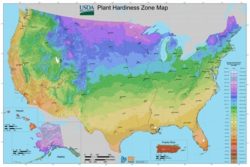
hardiness
Most peonies are hardy in USDA Hardiness Zones 3 to 8. However, these zones were designed with average low winter temperatures in mind and do not take into consideration numerous other variables. USDA zones were developed for plants with persistent above ground stems -most peonies will not be accurately accounted for in the system as all peonies have crowns and roots capable of new growth annually from the subsurface (includes woody peonies).
Water in the environment (includes ice), temperature variability, soil permeability, soil moisture and numerous other factors should be treated with equal importance when looking at hardiness. The zones should be used as a guideline, but not a rule. Link to larger USDA Hardiness Zone Map
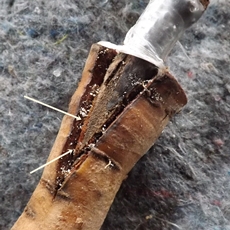
heal or healing
Also known as callus formation. A term that describes a period of time in which a graft’s scion joins through cellular growth to a nurse root. A period of 2 weeks at a temperature of approximately 75 to 82°F, in damp conditions are generally viewed as optimal healing conditions. Numerous methods and variation are used to attain proper healing. See grafting article for further information.
All peonies are capable of callus formation. Callus formation is a “healing” process which protects injured areas like those created by division or digging clumps. This type of growth could be compared to scare tissue formation in humans.
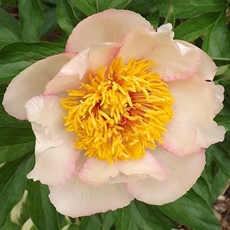
Herbaceous Hybrid (Registry Group designation)
These are herbaceous peonies which have more than one species in their ancestry. Some have pedigrees involving four or more species in their makeup. Typically stems carry one bloom, but sometimes more. Colors tend to be purer and more vibrant than in Lactiflora Group cultivars.
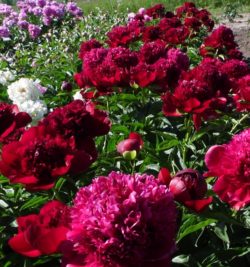
herbaceous peony
Any peony that produces annual growth and contains no woody parts above the soil surface. Herbaceous peonies grow new stems each spring after their period of dormancy (winter). Common garden peonies suchas, P. lactiflora cultivars are representative of this group.

intersectional peony
Any peony which arises from hybridization between two or more sections. This group commonly arises from a cross of plants from the taxonomic sections Moutan x Paeonia (woody peony x herbaceous peony).
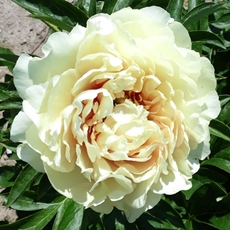
Itoh Group and Intersectionals (Registry Group desigination)
Itoh Group peonies are hybrids having Lactiflora Group peonies as a seed parent and Lutea Hybrid Group peonies as a pollen parent. The term “Intersectional” applies to crosses between two different sections of the genus and is thus a general descriptive term. Itoh applies to a specific cross as noted above. Features of most of these to date are woody peony-like foliage and flowers, with herbaceous plant habit.

Itoh peony
A group of peonies developed through selective breeding of (woody peony x herbaceous peony) or (herbaceous peony x woody peony). Itoh group peonies have characteristics of both herbaceous and woody peonies. In cold climates they are treated (grown) like herbaceous peonies – cut to the ground at the end of each growing season. See Itoh Peonies for further information.
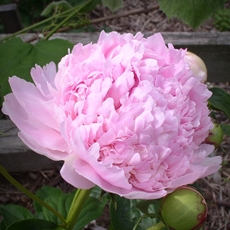
lactiflora
Paeonia lactiflora is a species originating from China and is a herbaceous type. Paeonia lactiflora was selectively bred for centuries in China and Europe, and more recently in the United States. Many cultivars are in commerce with highly variable characteristics. It is the most common garden peony and is prized as a cutflower .
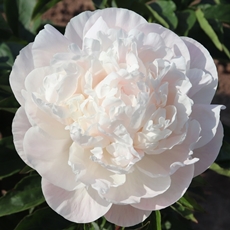
Lactiflora Group (Registry Group designation)
These are the common garden peonies descended from the Chinese herbaceous peonies. They are diploid in chromosome number. There are more cultivars of these than in any other group. Crosses between members of this group are not considered hybrids. Multiple blooms per stem almost always occur with plants in this group. As a group, they are latest to bloom. Also in this group are the “lactifloras of hybrid origin” which result from hybrids being crossed back to lactifloras to the point they become visually indistinguishable from them.

leaf
An annual structure in peonies. Leaves carry out the work of photosynthesis during the growing season. Leaves are collectively known as foliage.
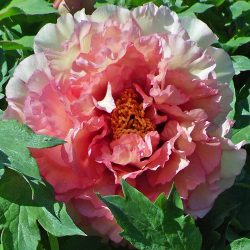
lutea hybrid
The name given to a group of woody peonies that originated from crosses of P. delavayi x P. suffruticosa. At one time the yellow form of P. delavayi was classified and named P. lutea. The lutea hybrids have the largest color variation of any group of peonies, P. delavayi being largely responsible. Woody peony cultivars with flowers having yellow pigmentation arise from this group.
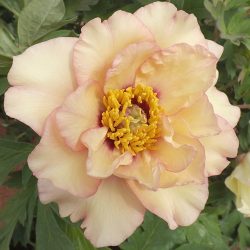
Lutea Hybrid Group (Registry Group designation)
These are woody peony (tree peony) cultivars originally derived by crossing between members of the subsection Delavayanae (P. delavayi, P. lutea, P. potaninii and P. ludlowii) as one parent, and members of the Suffruticosa Group as the other parent. Crosses within the Lutea Hybrids Group are also included.
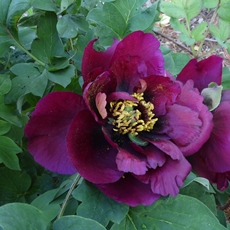
mutation
The changing of the structure of a gene, resulting in variation of expression in traits. Mutation can occur naturally or through man made  actions. Mutation may impact traits in many ways, some are detrimental, others may enhance a plant’s appearance, growth, etc… Mutations are most noticeable in flower color and form, but other traits are commonly altered, going unnoticed by the casual observer. Certain groups of peonies such as lutea and intersectional hybrids have noticeably more mutations, which is likely due to their divergent genetic backgrounds which are not completely compatible. At right is the lutea hybrid cultivar ‘Copper King’, showing a mutation to the right.
actions. Mutation may impact traits in many ways, some are detrimental, others may enhance a plant’s appearance, growth, etc… Mutations are most noticeable in flower color and form, but other traits are commonly altered, going unnoticed by the casual observer. Certain groups of peonies such as lutea and intersectional hybrids have noticeably more mutations, which is likely due to their divergent genetic backgrounds which are not completely compatible. At right is the lutea hybrid cultivar ‘Copper King’, showing a mutation to the right.
